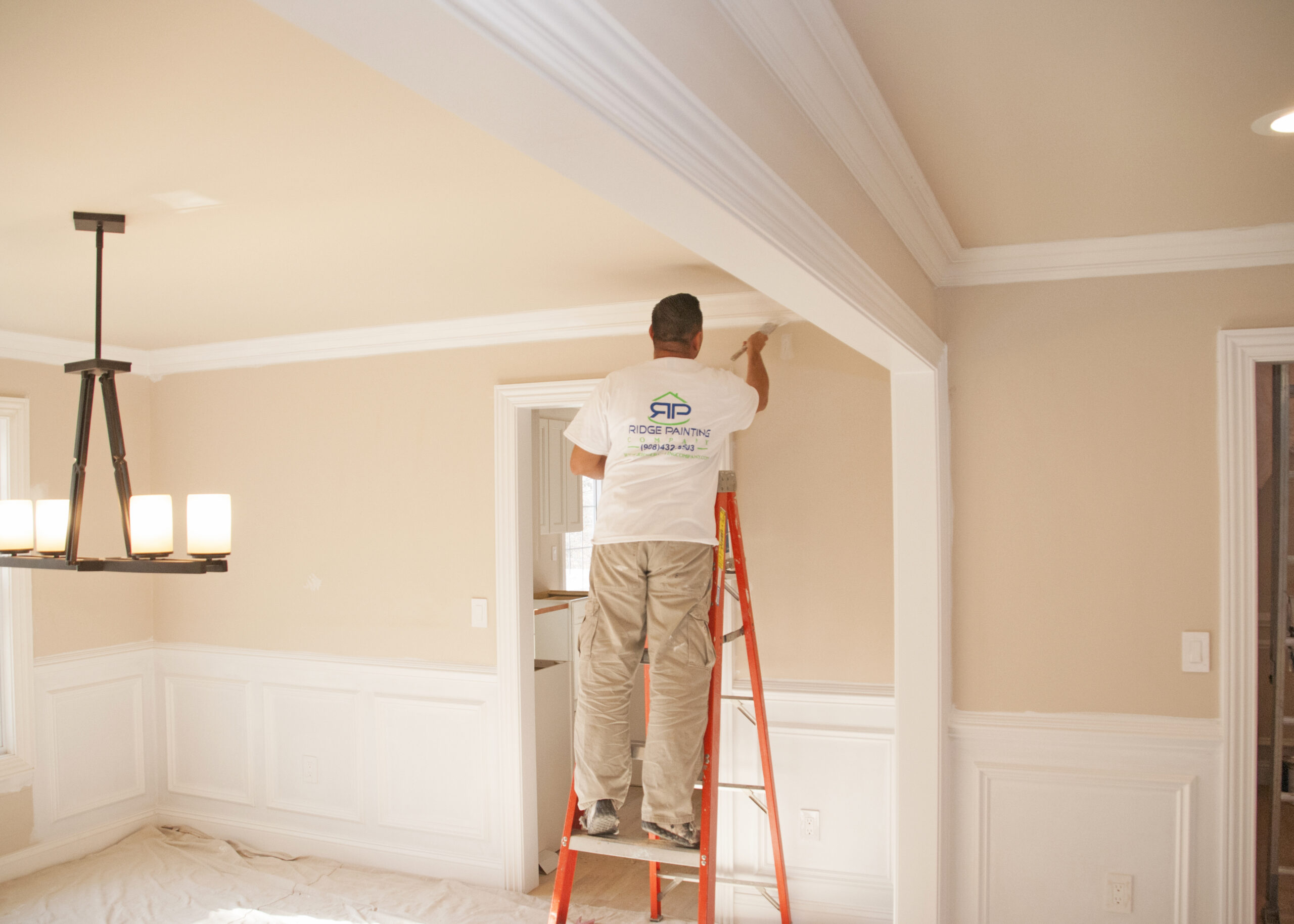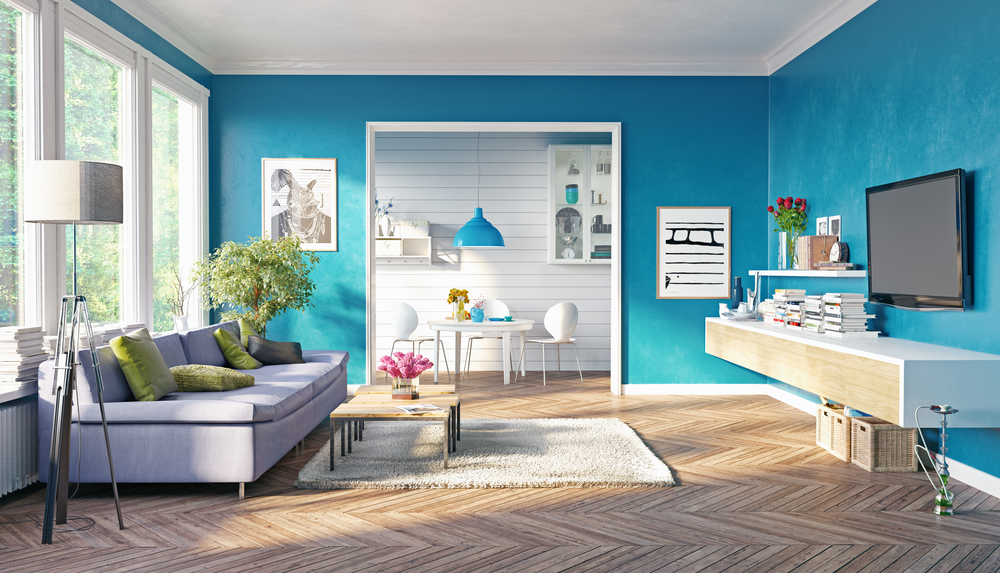Enhance Your Interior Layout With Comprehensive Shade Assessment
The integration of shade consultation into indoor style offers an unique possibility to fine-tune and raise the aesthetic and emotional resonance of a space. By involving with an experienced color professional, you can browse the complexities of shade choice, ensuring that your options not only enhance architectural attributes however also reverberate with personal design and psychological influence.
Benefits of Shade Examination

Furthermore, shade appointment aids in taking full advantage of all-natural light and maximizing spatial perception. Lighter shades can make a space appear even more large, while darker tones create an intimate setting. Cleveland Metro Painting Specialists. This tactical application of color can substantially affect the total setting of any kind of indoor area
In addition, specialist consultants have a detailed understanding of existing fads and classic standards, making sure that the selected colors will remain attractive over time. This foresight can conserve customers from expensive redesigns in the future. Lastly, color assessment equips clients by providing them with a clear vision and instructions, cultivating self-confidence in their style options and ultimately leading to an extra successful and satisfying indoor layout result.
Comprehending Color Psychology
The value of shade psychology in interior layout can not be overstated, as it looks into the psychological and emotional results that different hues can stimulate in people. Shades can influence state of mind, behavior, and also productivity, making them a critical factor to consider in any layout project.
For circumstances, warm shades such as red, orange, and yellow are typically connected with power and heat. They can promote sensations of enjoyment and convenience, making them suitable for social areas like living rooms or kitchen areas. Alternatively, awesome shades like blue, green, and purple have a tendency to stimulate calmness and harmony, making them ideal for bed rooms or reflection areas.
Furthermore, using neutral tones can create a balanced atmosphere by allowing the bolder shades to attract attention without overwhelming the senses. Recognizing these emotional impacts allows developers to develop spaces that not only look visually pleasing however additionally advertise psychological well-being.
Incorporating color psychology right into indoor layout entails a thoughtful selection of hues tailored to the designated function of each room, inevitably enhancing the overall experience for its residents. This understanding is vital for attaining a unified and functional interior environment.
The Color Wheel Explained
Understanding the relationships between hues is important for effective interior design, and the color wheel functions as a valuable device in this procedure. The shade wheel, established by Isaac Newton in the 17th century, shows the spectrum Go Here of colors arranged in a circular layout. It consists of key shades-- red, blue, and yellow-- that can not be produced by mixing other shades. Second colors, formed by incorporating primaries, include environment-friendly, orange, and purple. Tertiary shades arise from blending a main and an additional color, leading to tones such as red-orange and blue-green.
The color wheel aids designers realize the connections in between colors, consisting of complementary, check my source comparable, and triadic systems. Complementary shades, positioned opposite each various other on the wheel, create lively contrasts that can energize an area.
Making use of the color wheel in interior decoration not just enhances aesthetic allure but likewise stimulates specific emotions and ambiences, making it an essential referral for shade assessment. Recognizing these relationships ultimately equips developers to create spaces that are both visually captivating and practical.
Picking the Right Scheme
Typically, choosing the appropriate palette is a decisive element in accomplishing an effective interior decoration project. An appropriate color design can merge a room, improve its functions, and stimulate desired feelings. To start, take into consideration the purpose of the area. Various areas offer diverse functions and need palettes that mirror their intended usage; as an example, serene shades such as soft blues or environment-friendlies work well in bedrooms, advertising leisure.
Next, take into account the all-natural light available. Light can dramatically alter exactly how colors show up, so it is important to analyze the room at various times of the day. Additionally, think about existing building components and furnishings. A harmonious palette must enhance these attributes, producing a cohesive look throughout the area.
When picking colors, utilize the 60-30-10 regulation, which recommends that 60% of the space must be a dominant shade, 30% a secondary shade, and 10% an accent color. This proportion ensures balance and visual passion (Cleveland Metro Painting Specialists). Ultimately, sample colors on the walls prior to devoting, as this allows you to see exactly how the hues interact with one another and the general ambiance they create in your interior decoration job.
Dealing With a Color Consultant

When working with a color professional, the process typically starts with a preliminary assessment. Throughout this conference, you'll discuss your vision, preferences, and the existing elements in your space. The consultant will analyze your demands and might advise details shade schemes that straighten with your goals.
After developing a direction, the professional will offer examples and visual aids to aid you visualize the recommended color pattern. This action is essential, as shades can appear in different ways under varying lighting conditions.
Additionally, a color consultant can guide you in choosing complementary home furnishings, artwork, and devices to balance with your selected combination. By working together closely, you can attain a refined aesthetic that elevates your interiors and develops a welcoming environment. Eventually, the experience of a shade professional can substantially enhance the general effect of your design task.
Conclusion
In summary, thorough color consultation serves as an important device for improving interior design. By leveraging professional expertise of shade psychology and spatial dynamics, a customized color palette can be developed to evoke specific emotions and develop an unified environment.
By engaging with an experienced shade consultant, you can browse the intricacies of color choice, ensuring that your options not only complement architectural features however additionally reverberate with individual style and mental influence. It makes up primary colors-- red, blue, and yellow-- that can not be created by blending various other colors.The shade wheel aids designers realize the partnerships in between shades, including corresponding, analogous, and triadic plans.When choosing colors, use the 60-30-10 policy, which suggests that 60% of the area ought to be a leading color, 30% a secondary color, and 10% an accent color. By leveraging specialist understanding of shade psychology and spatial characteristics, a tailored shade combination can be established to stimulate details emotions and produce a harmonious setting.